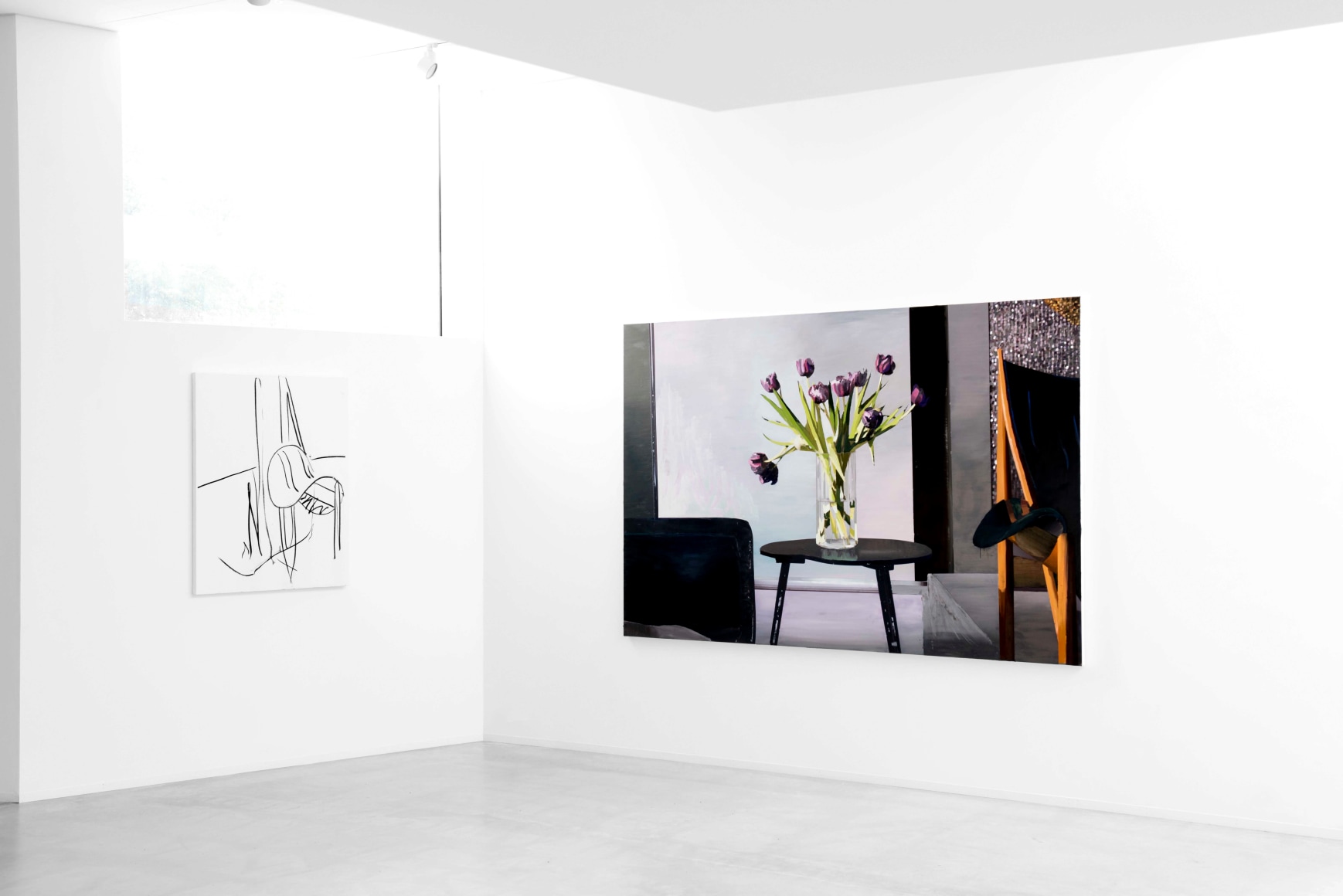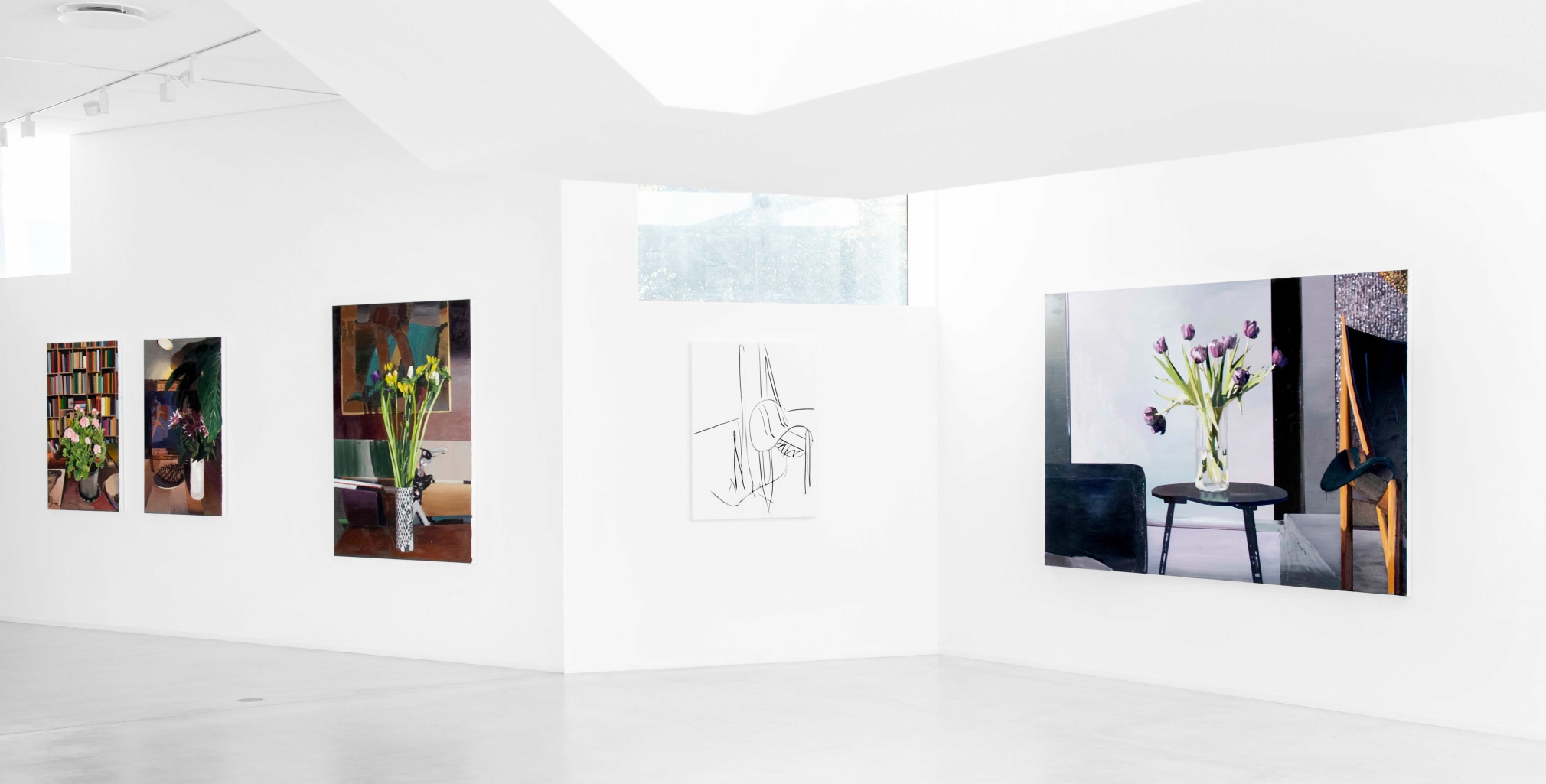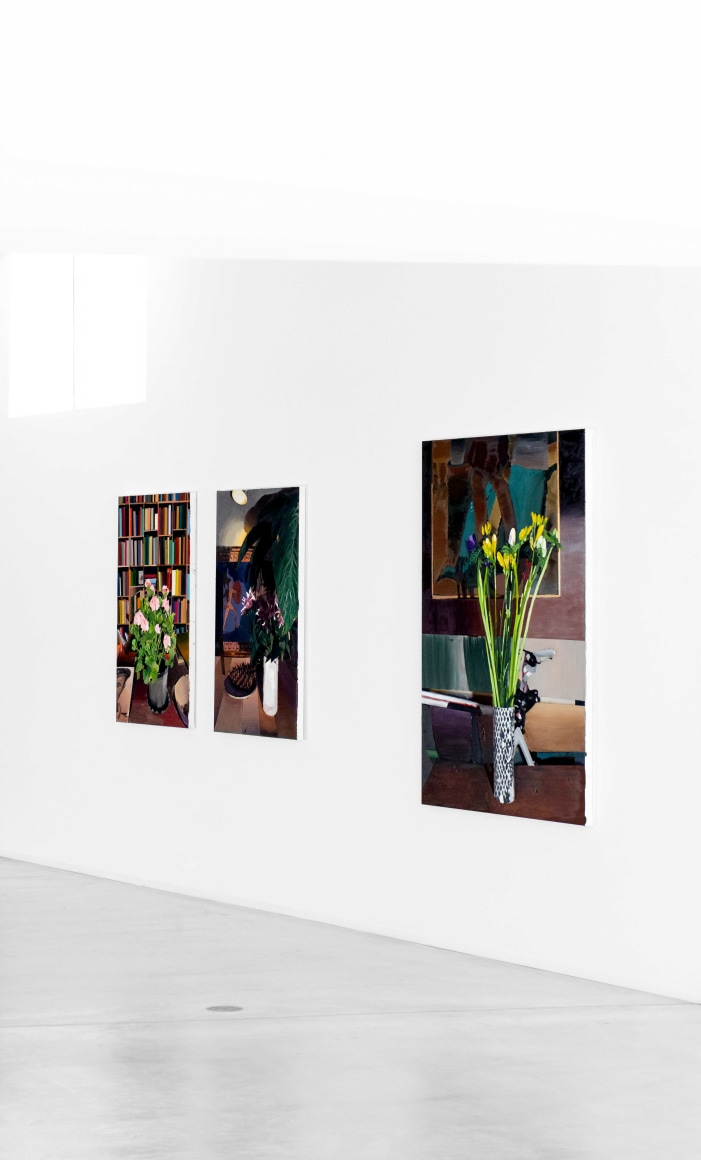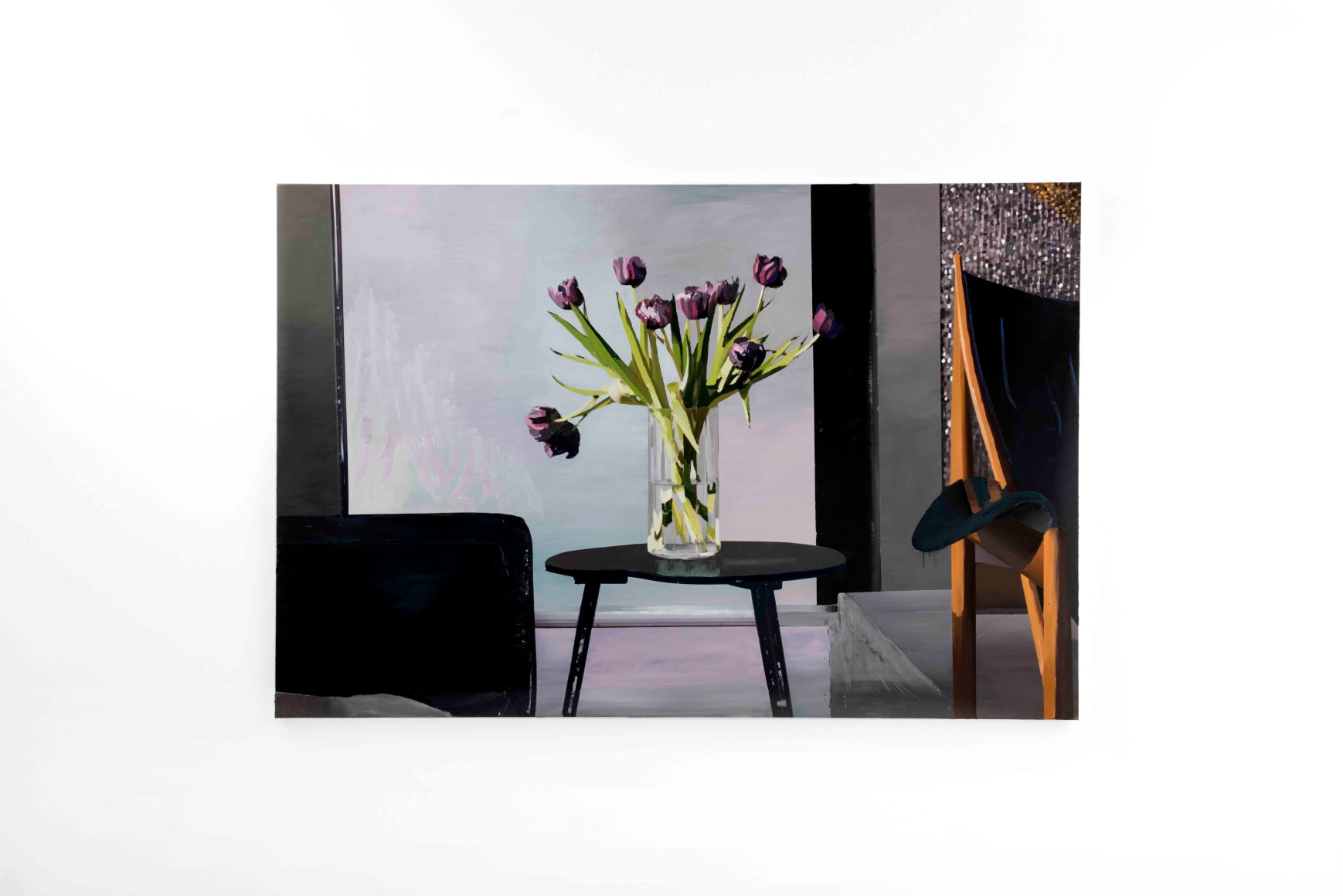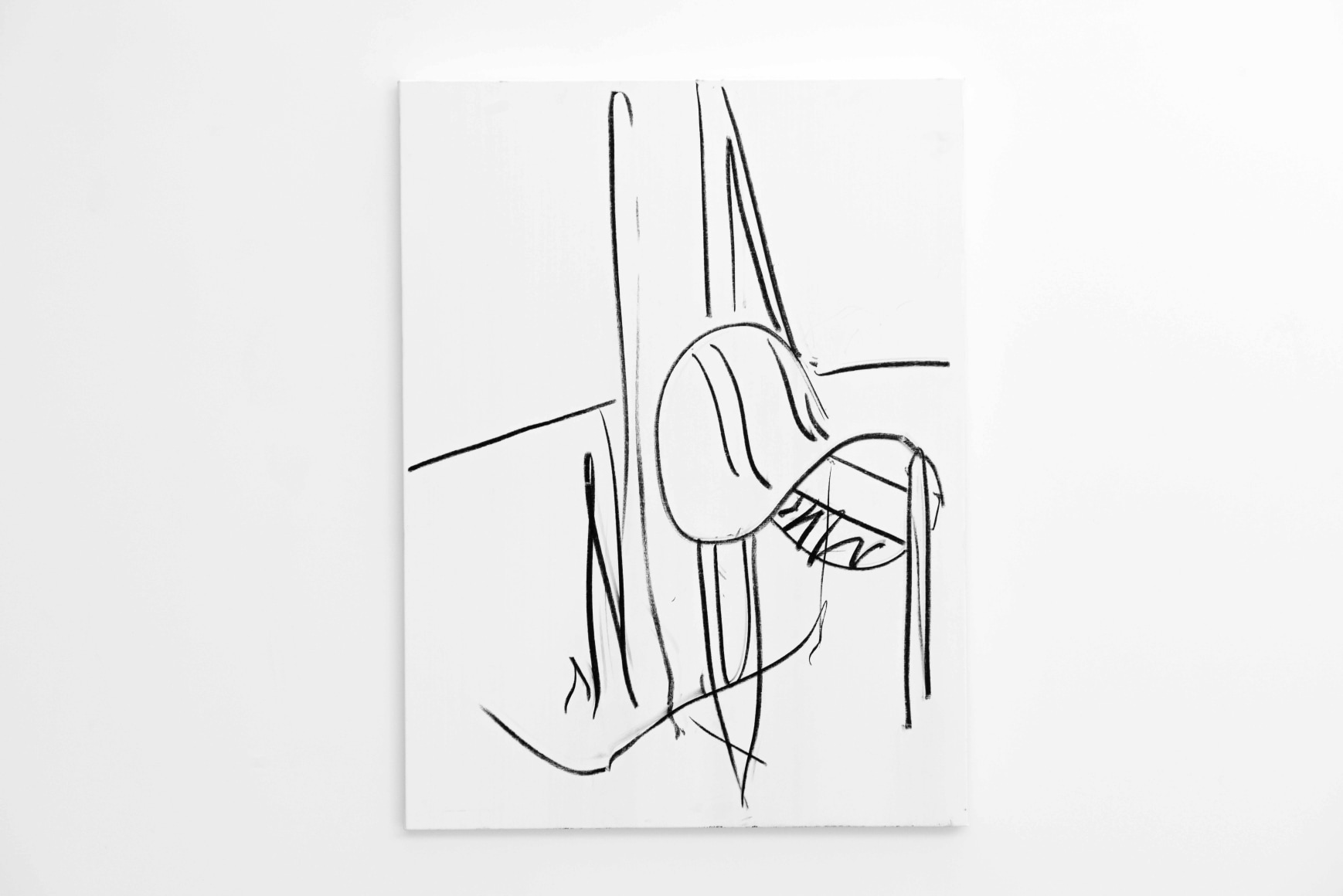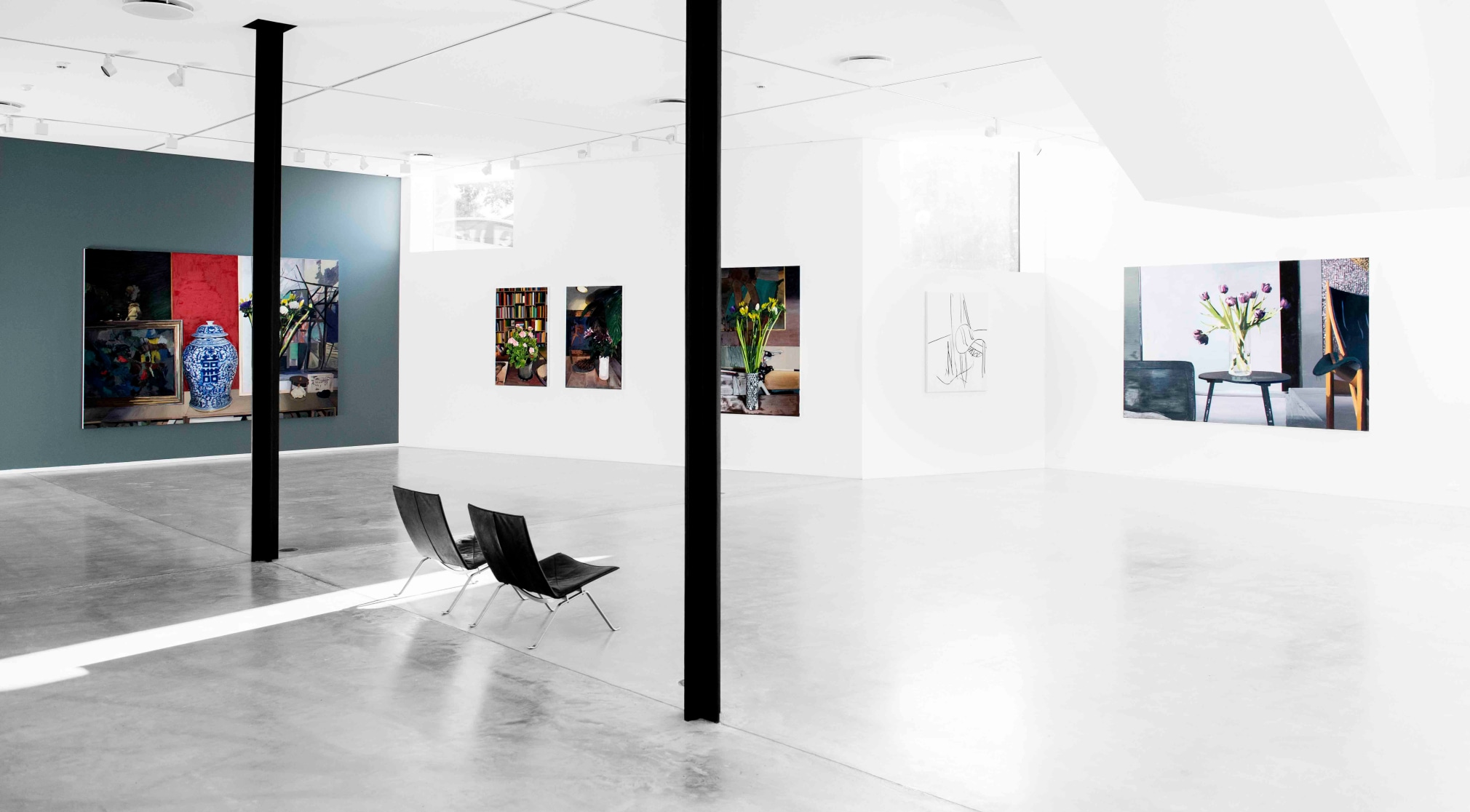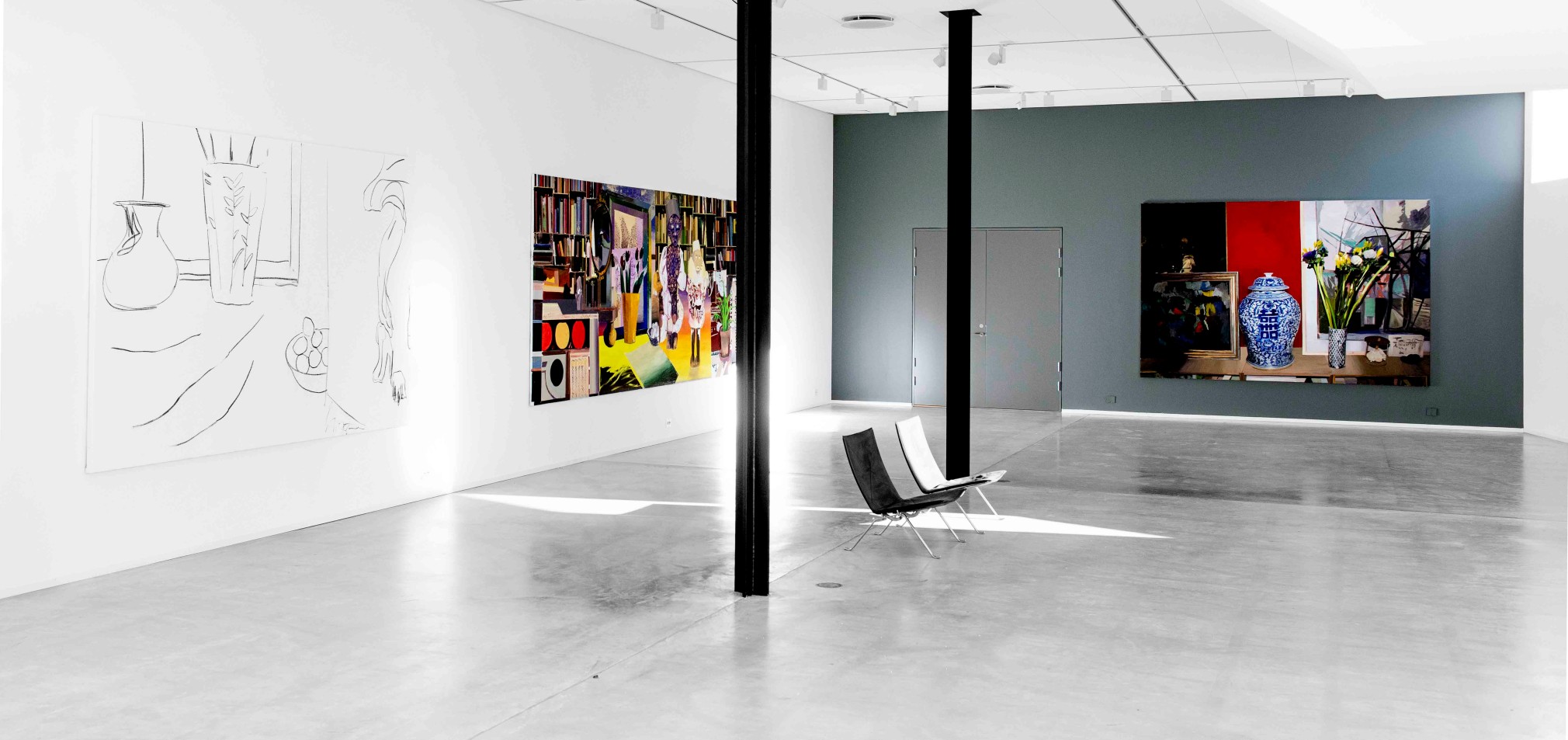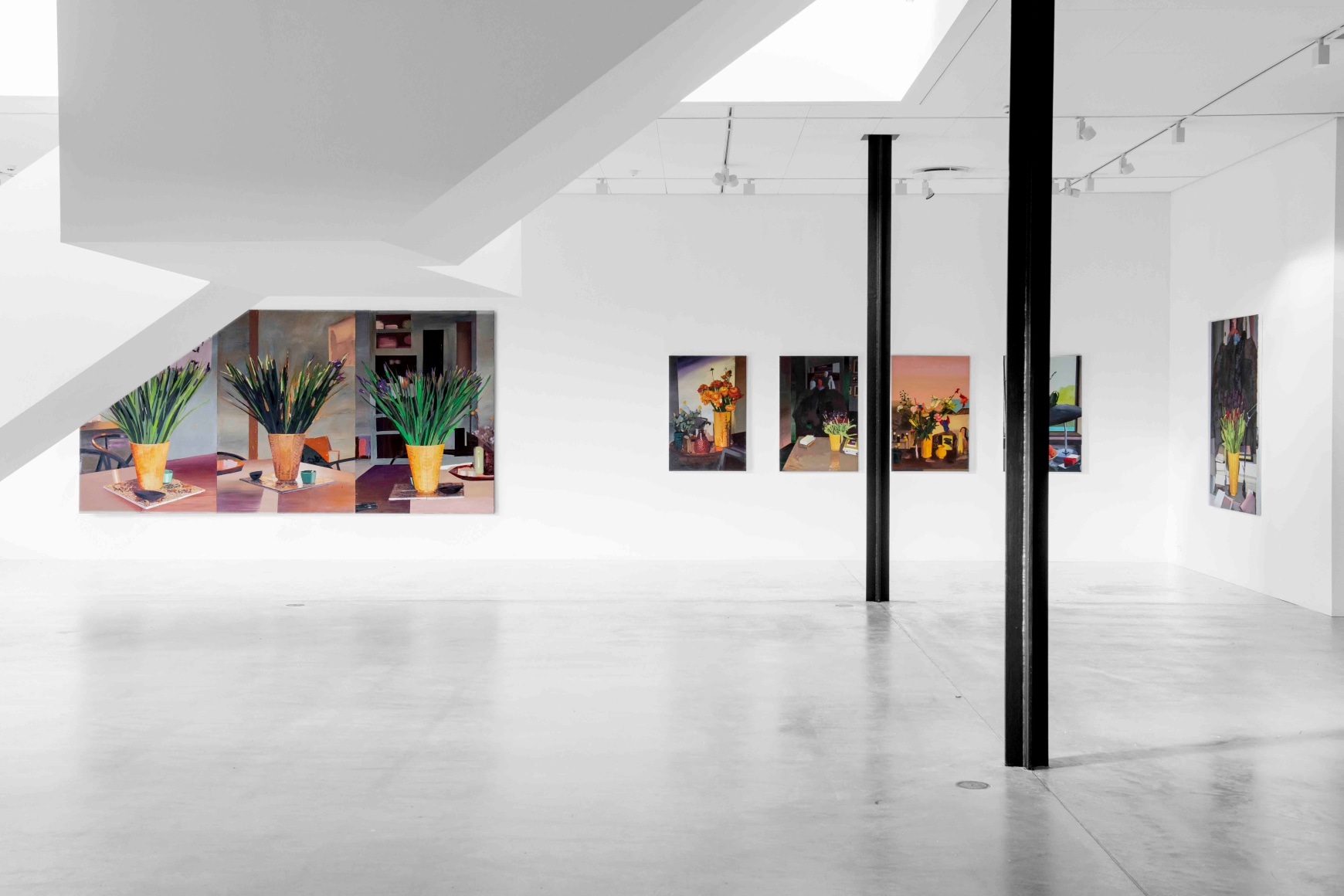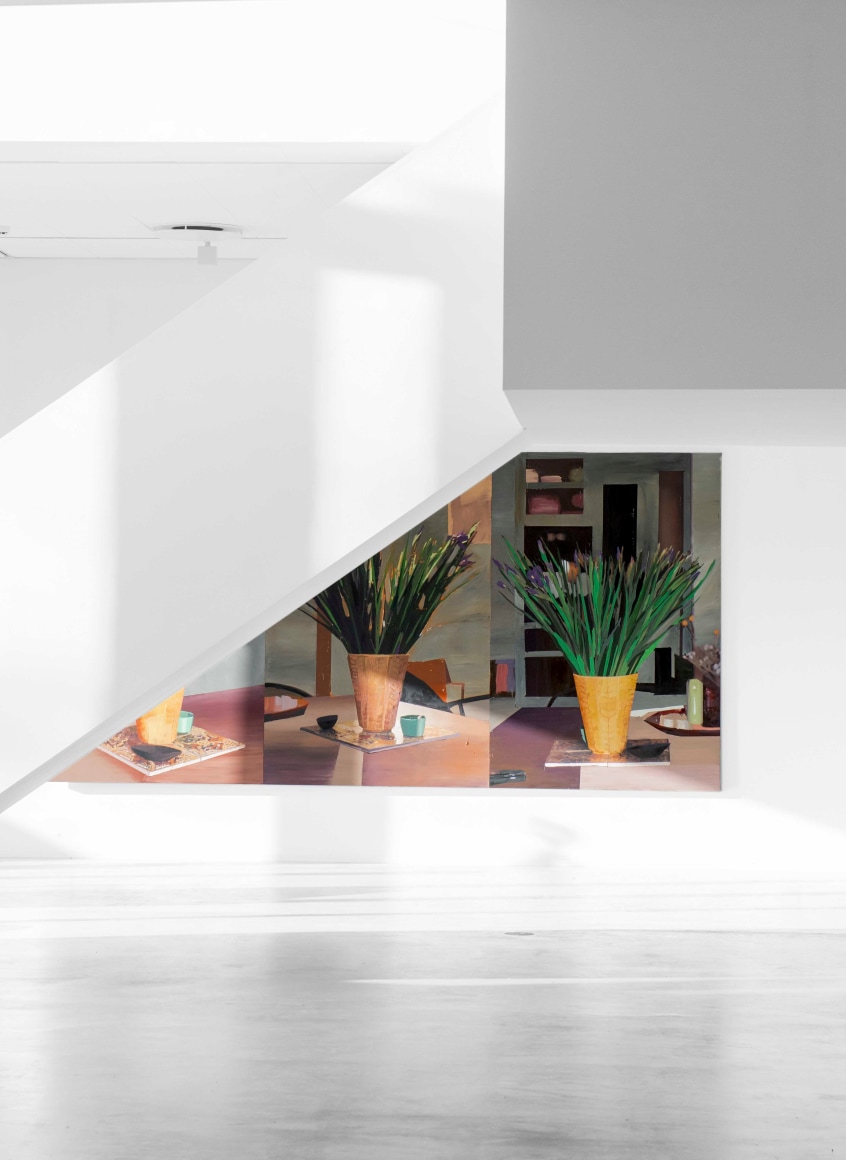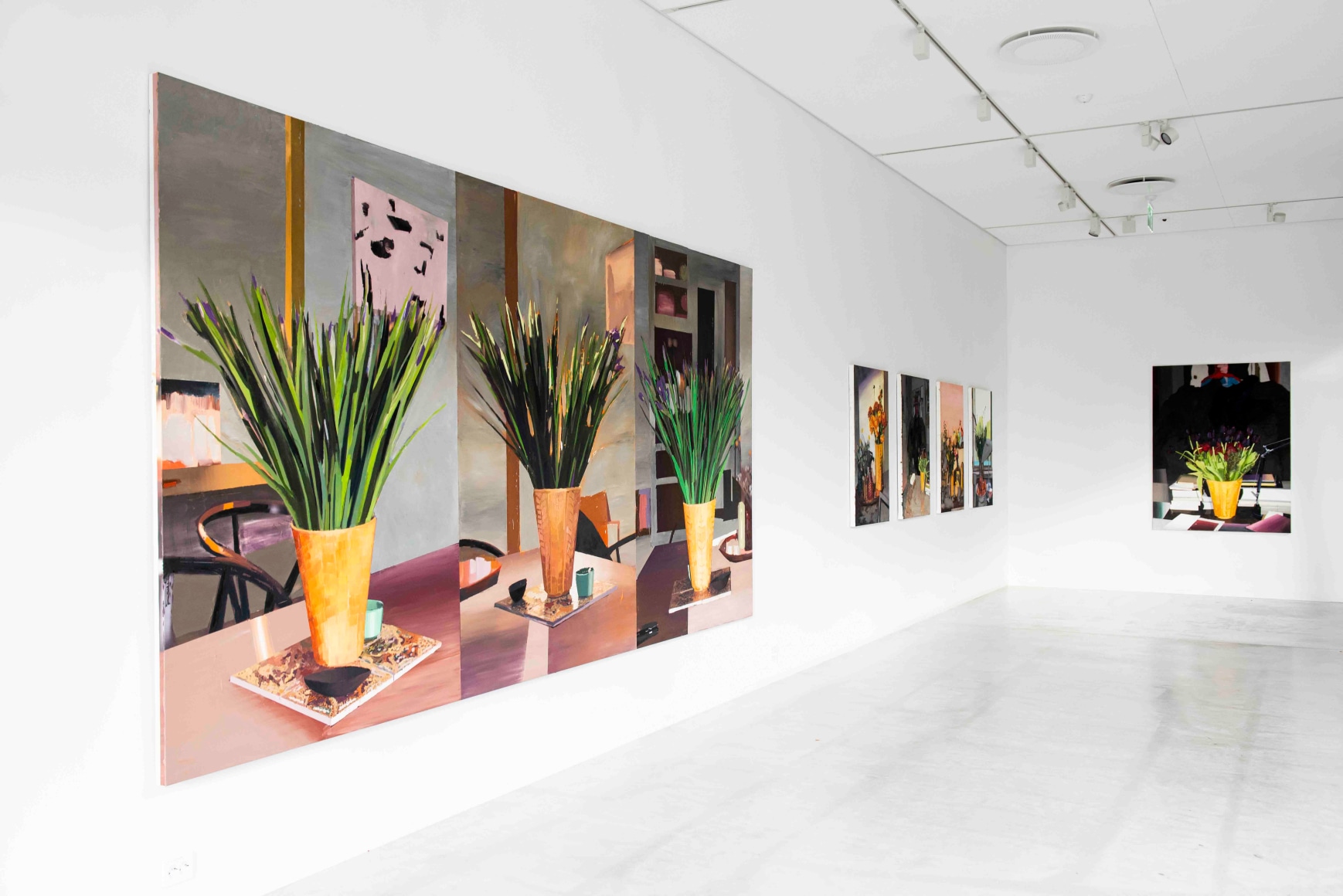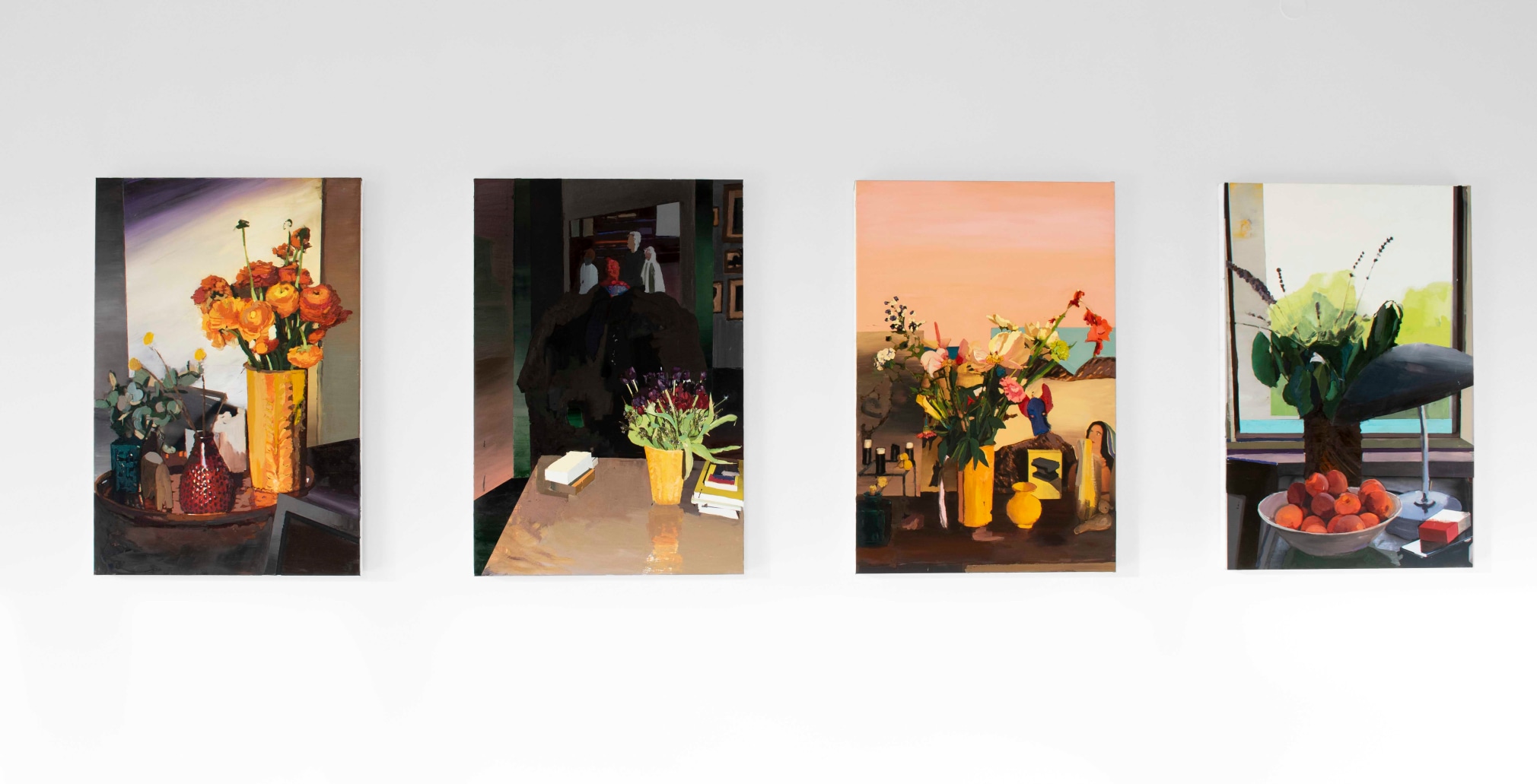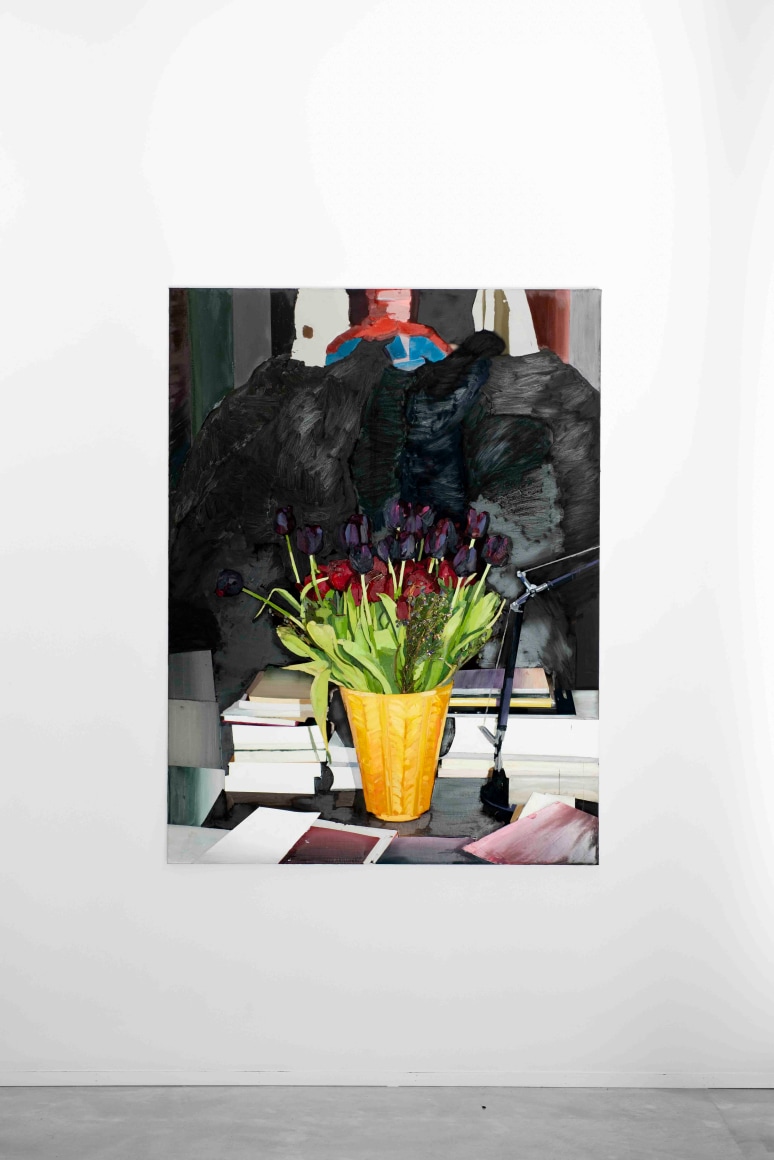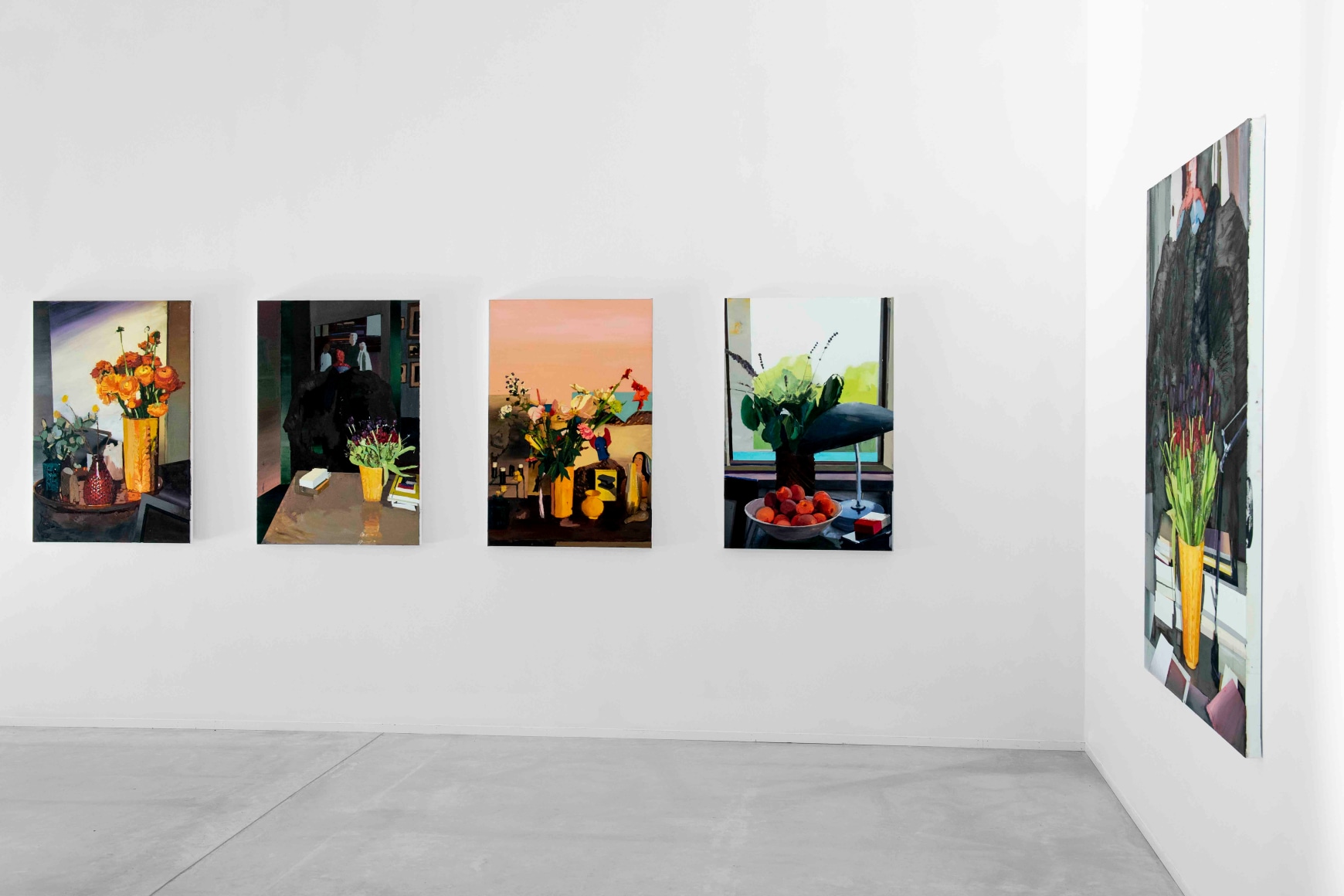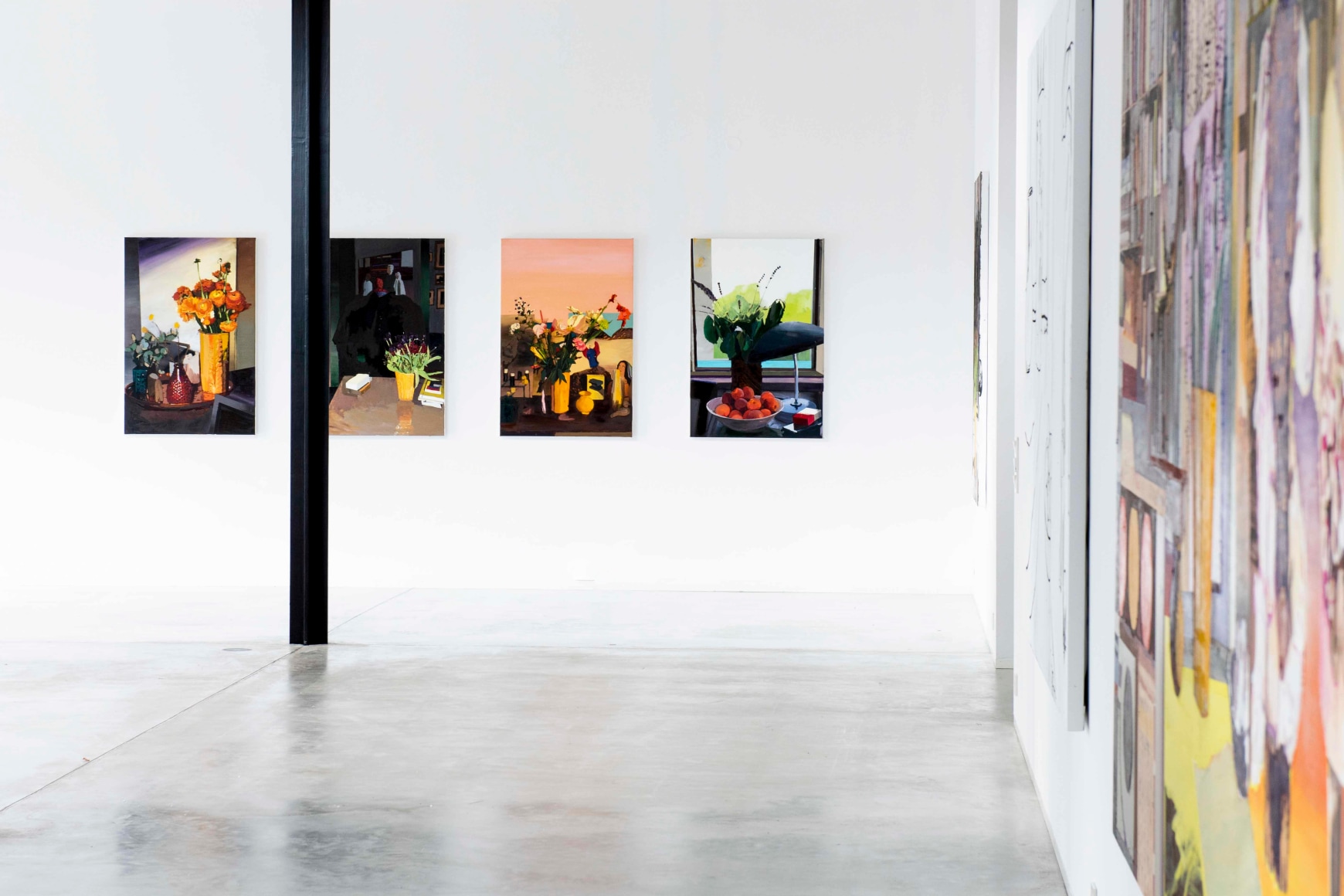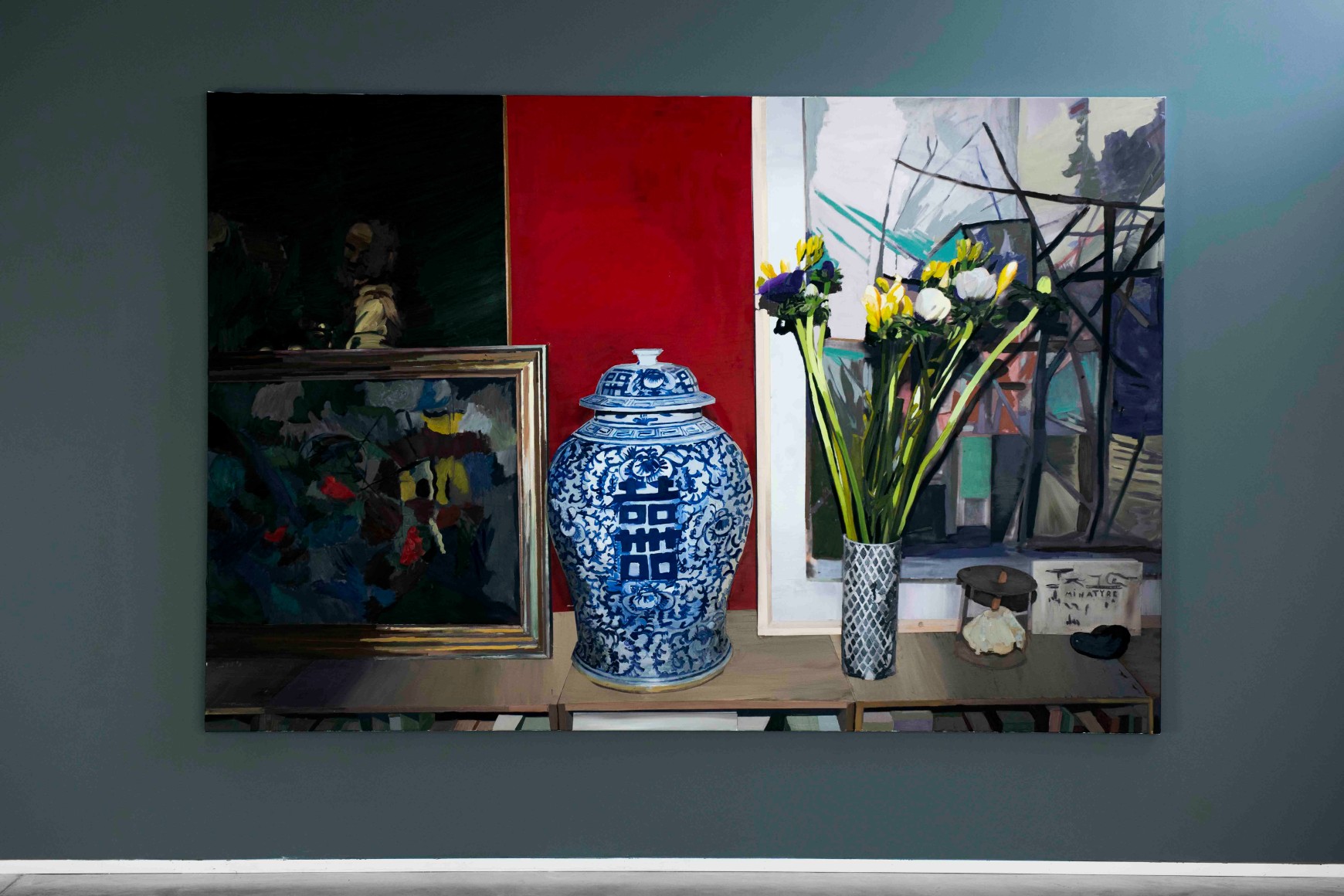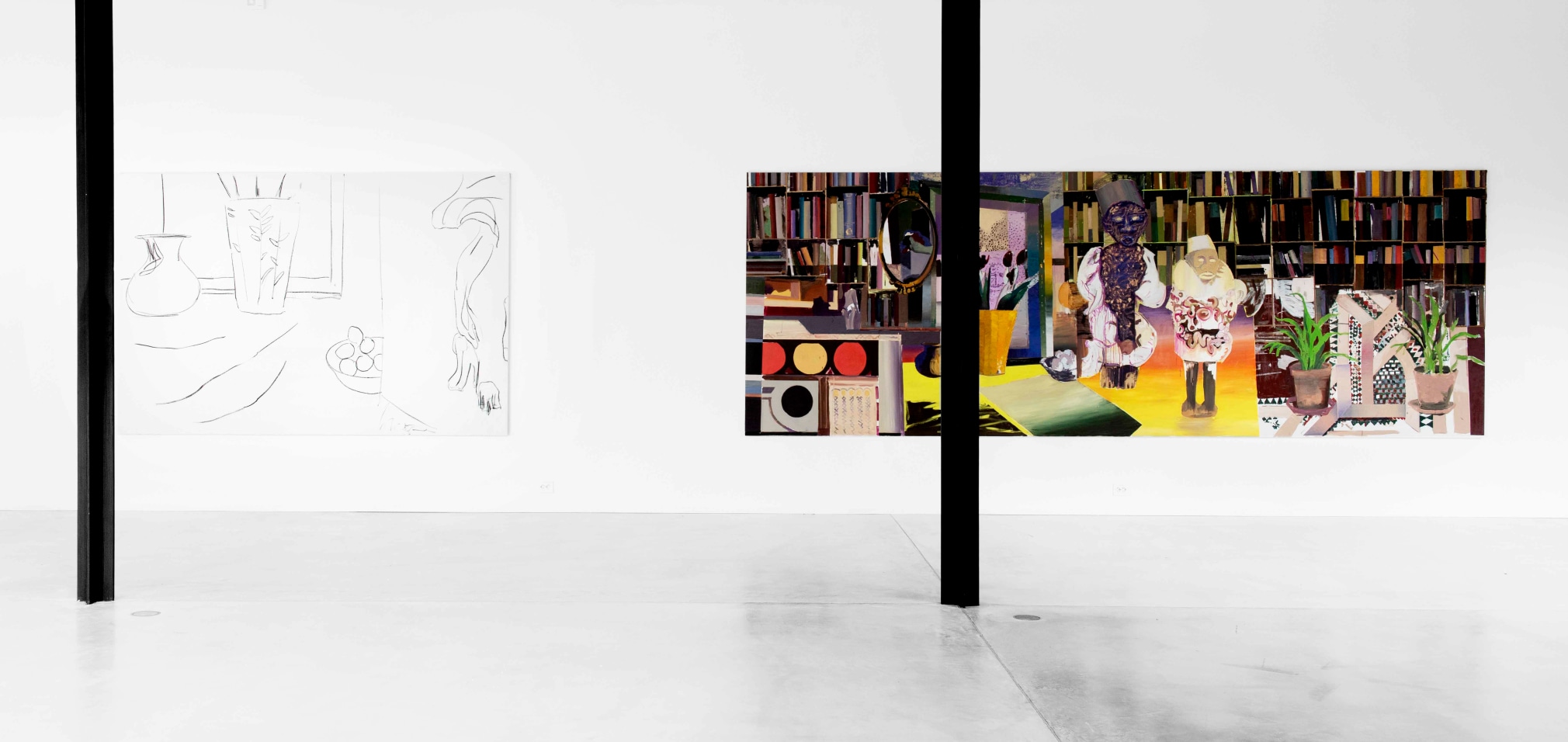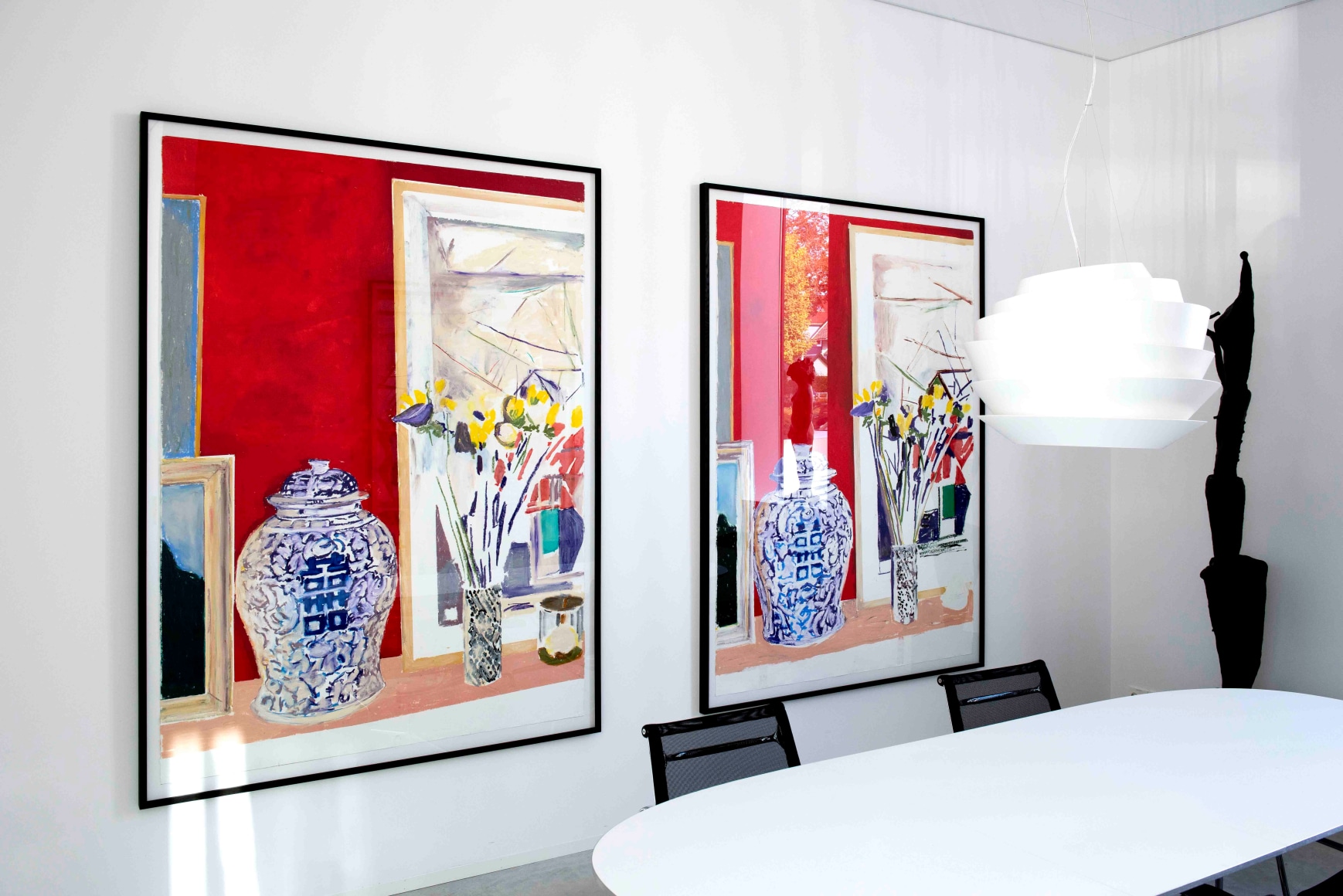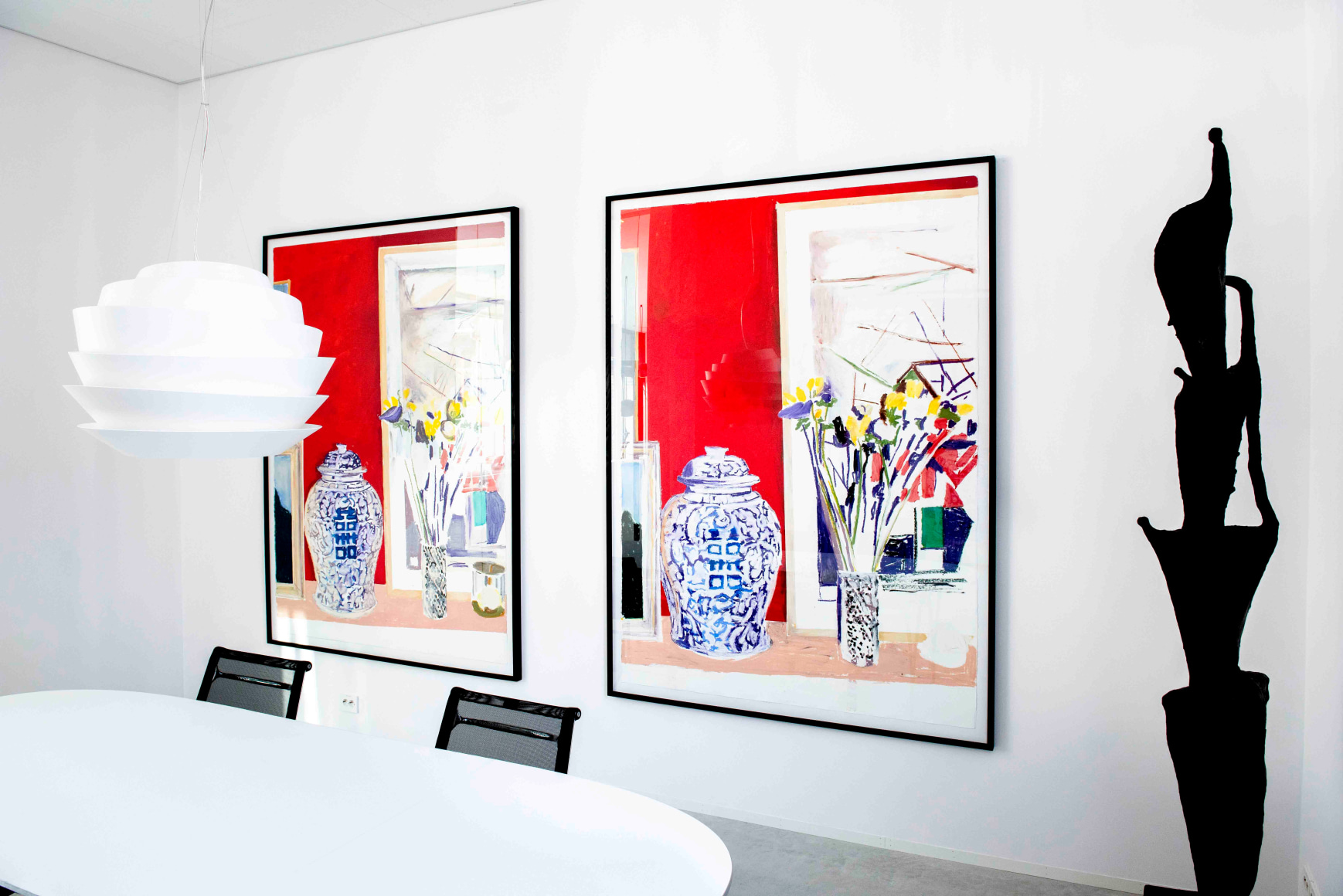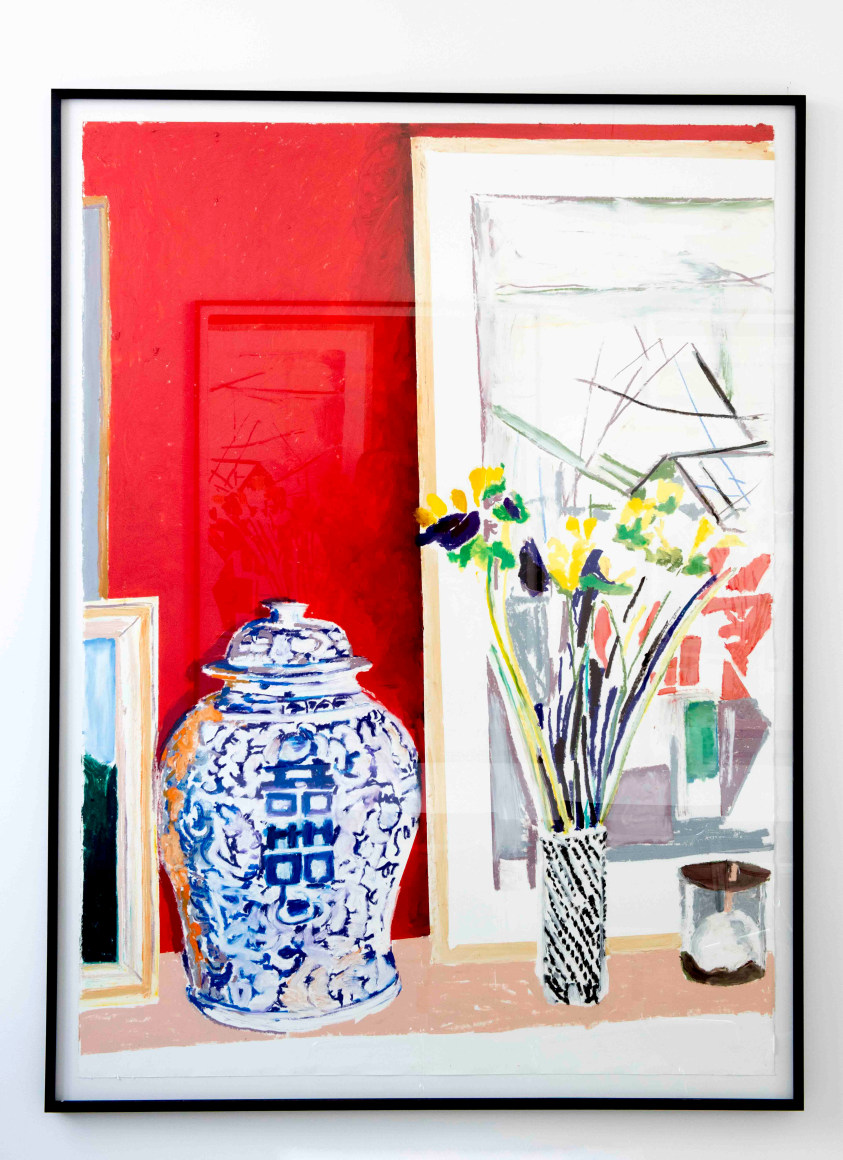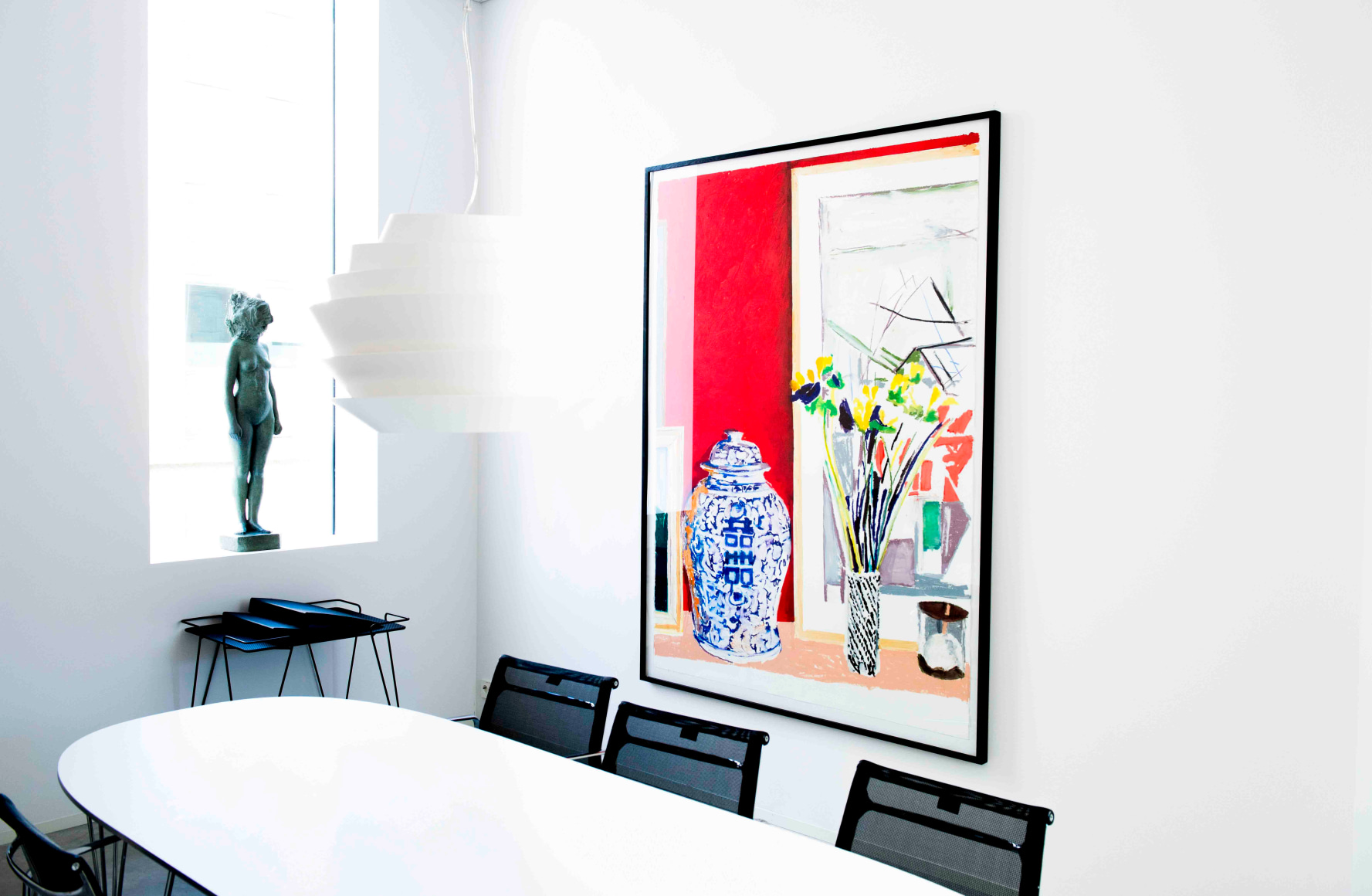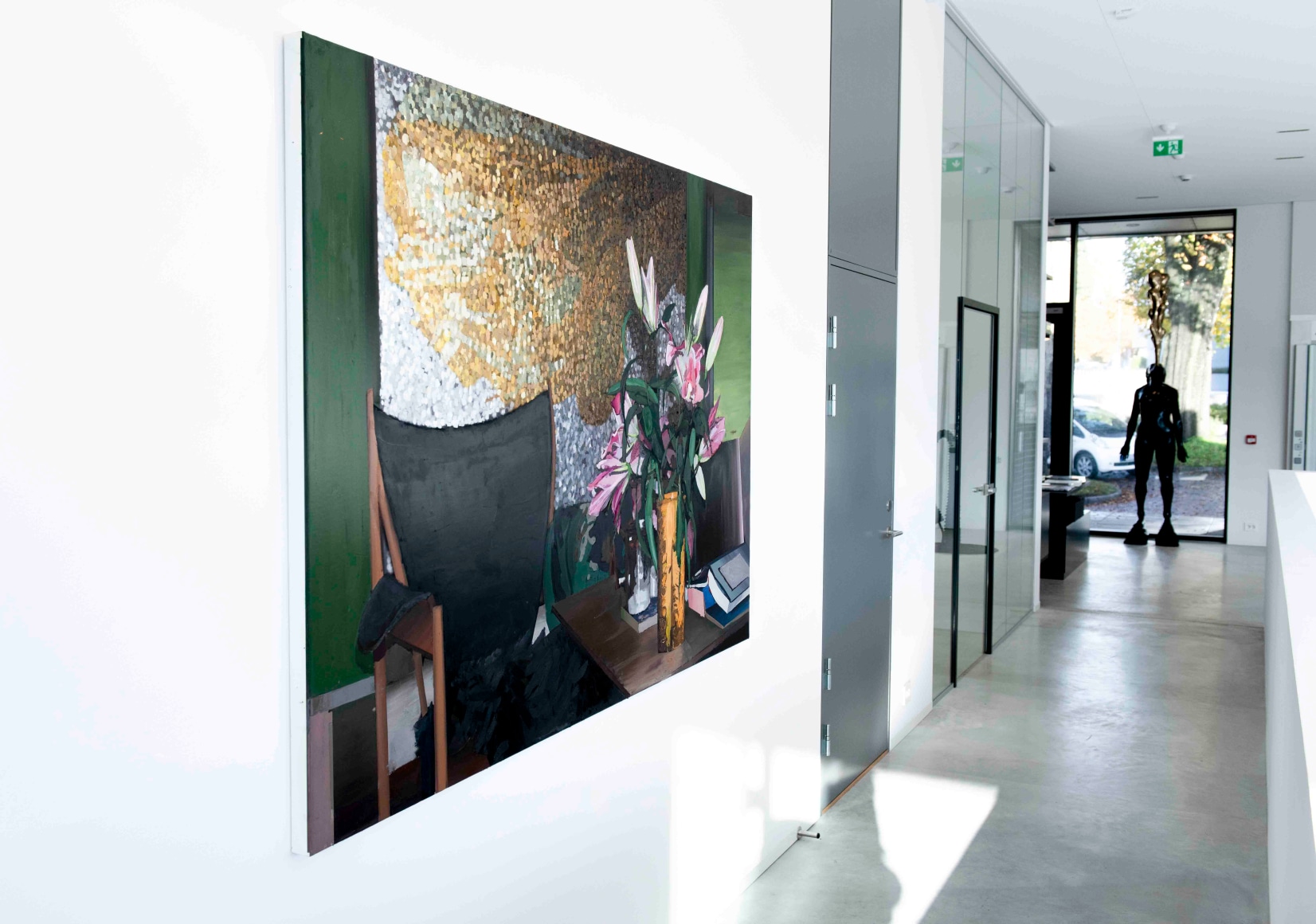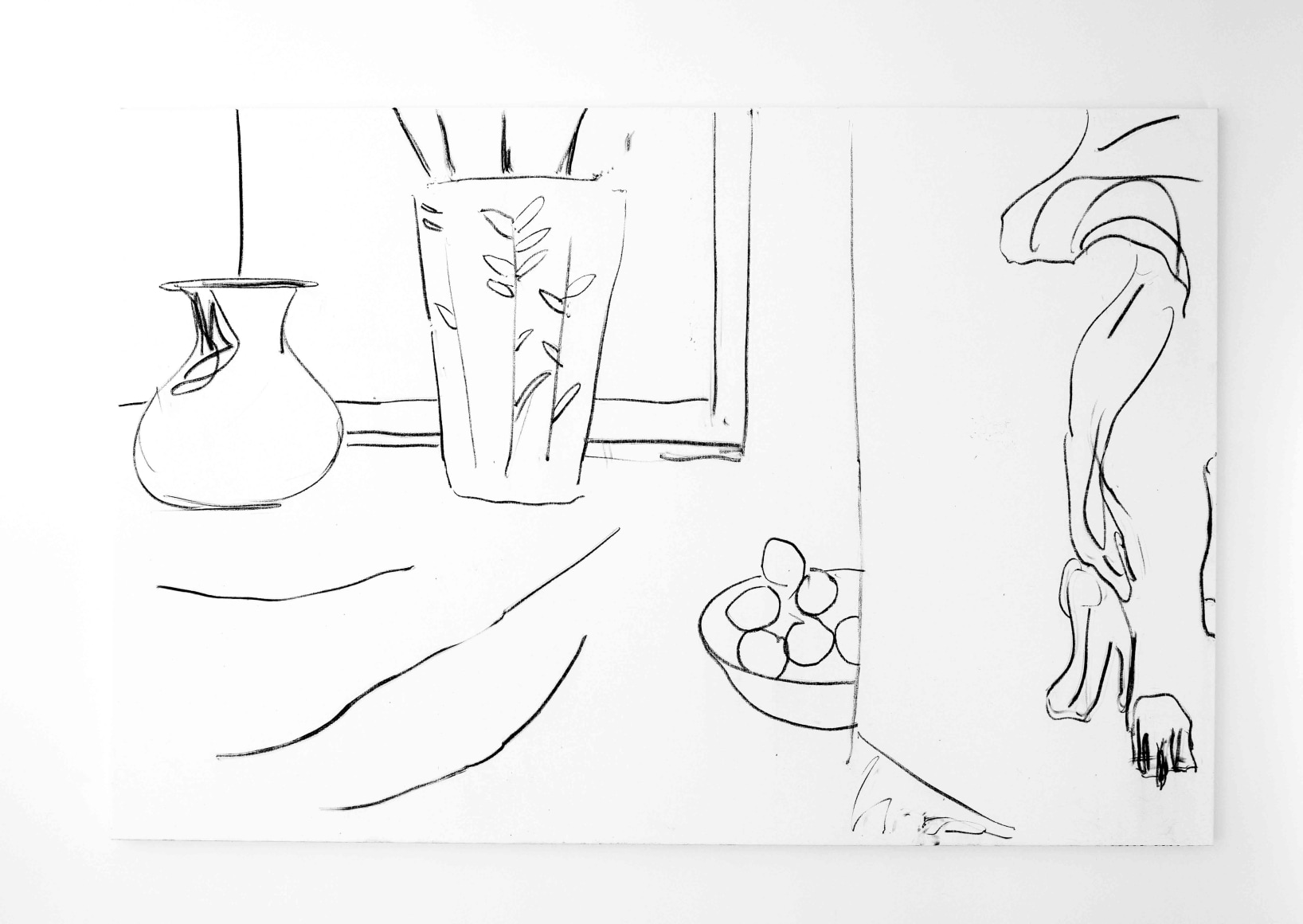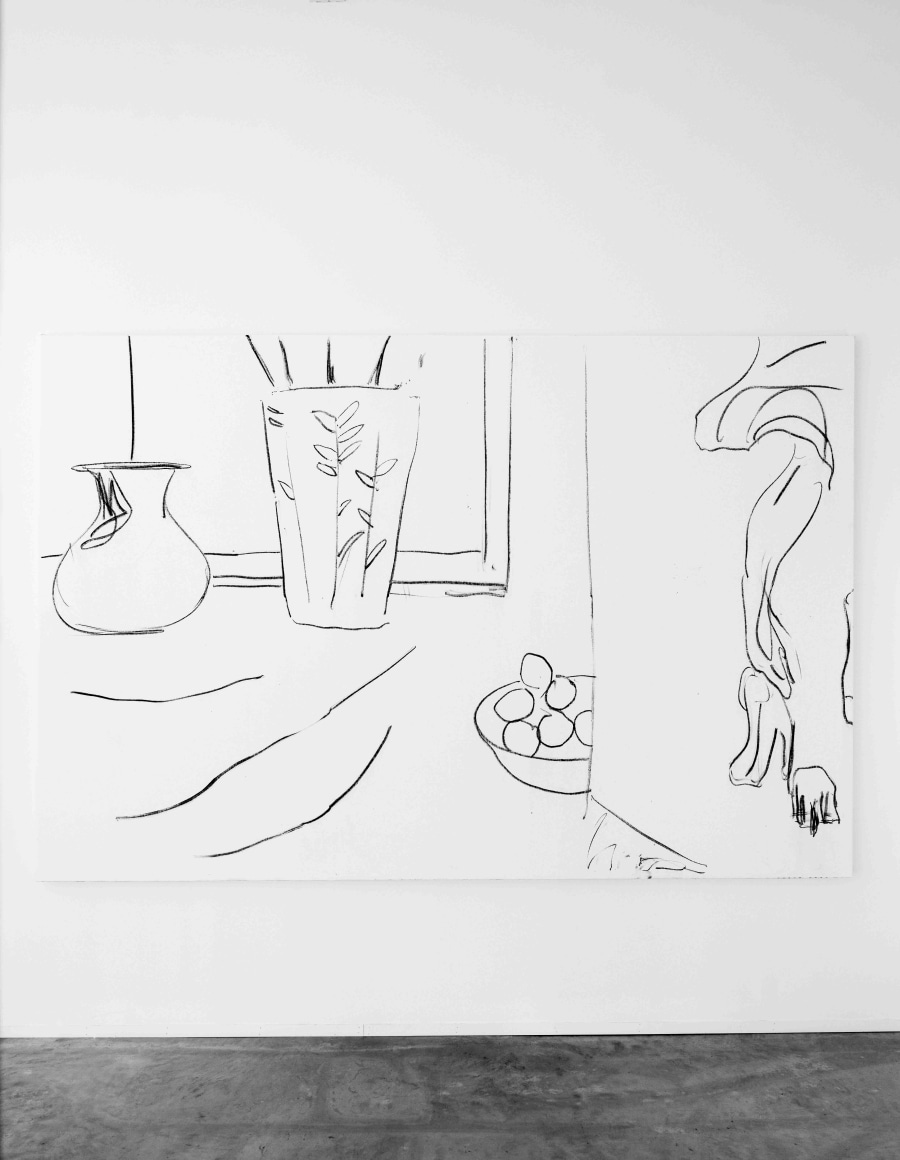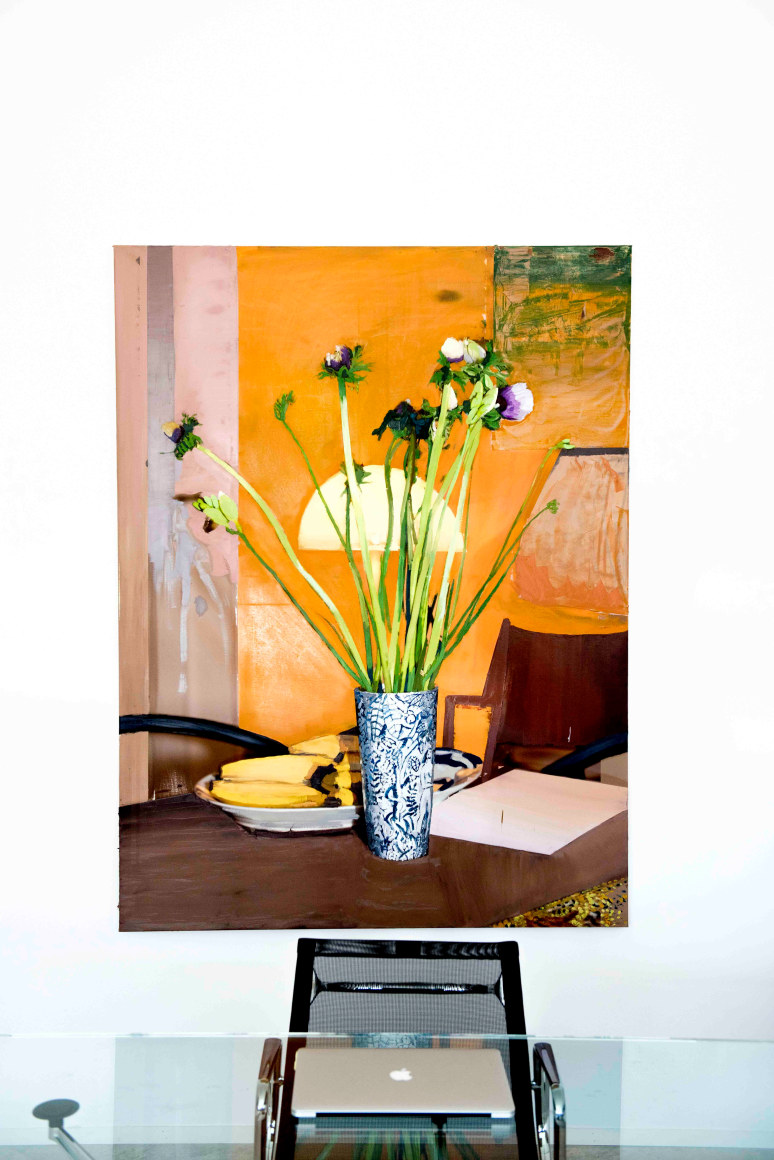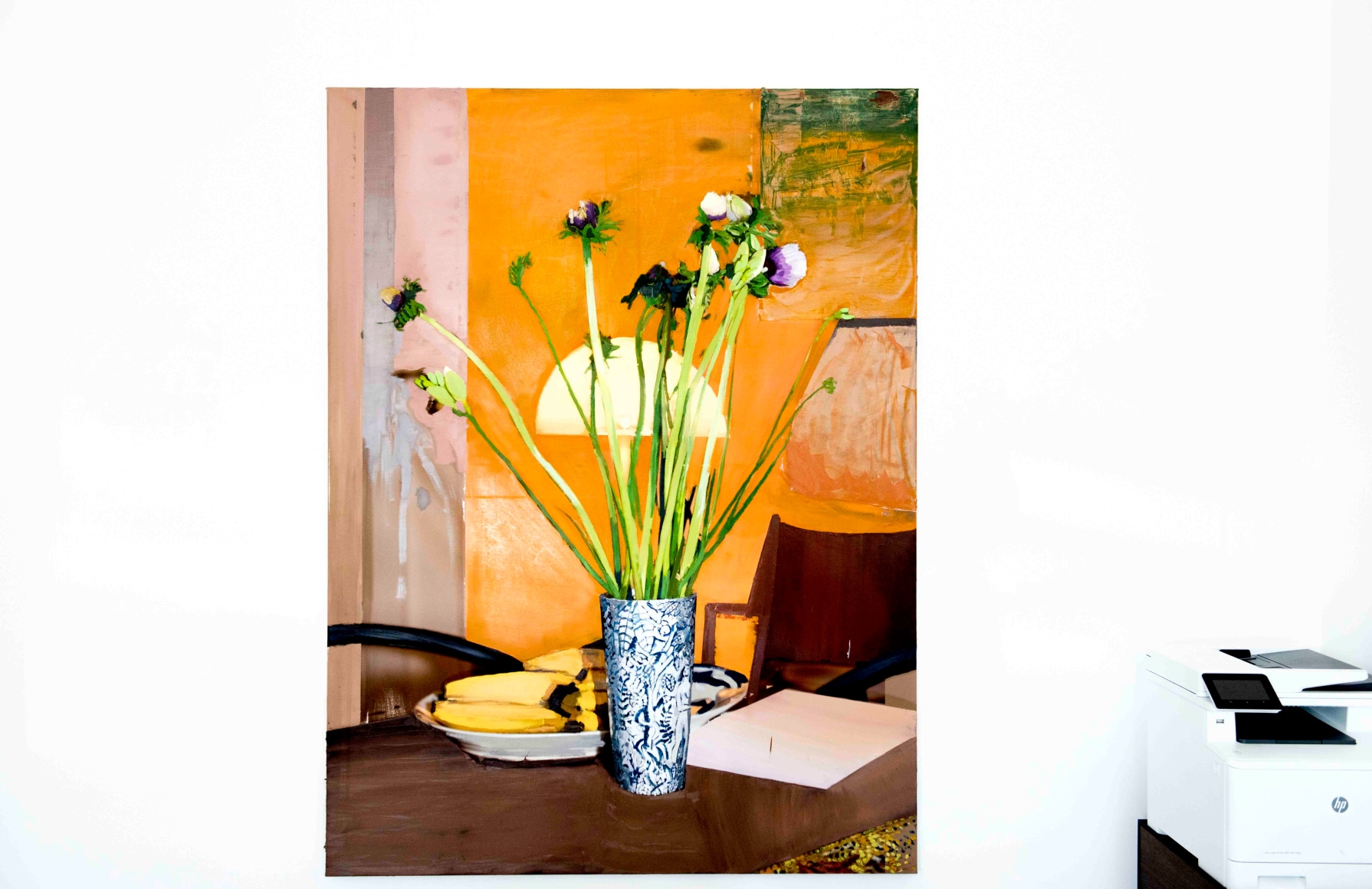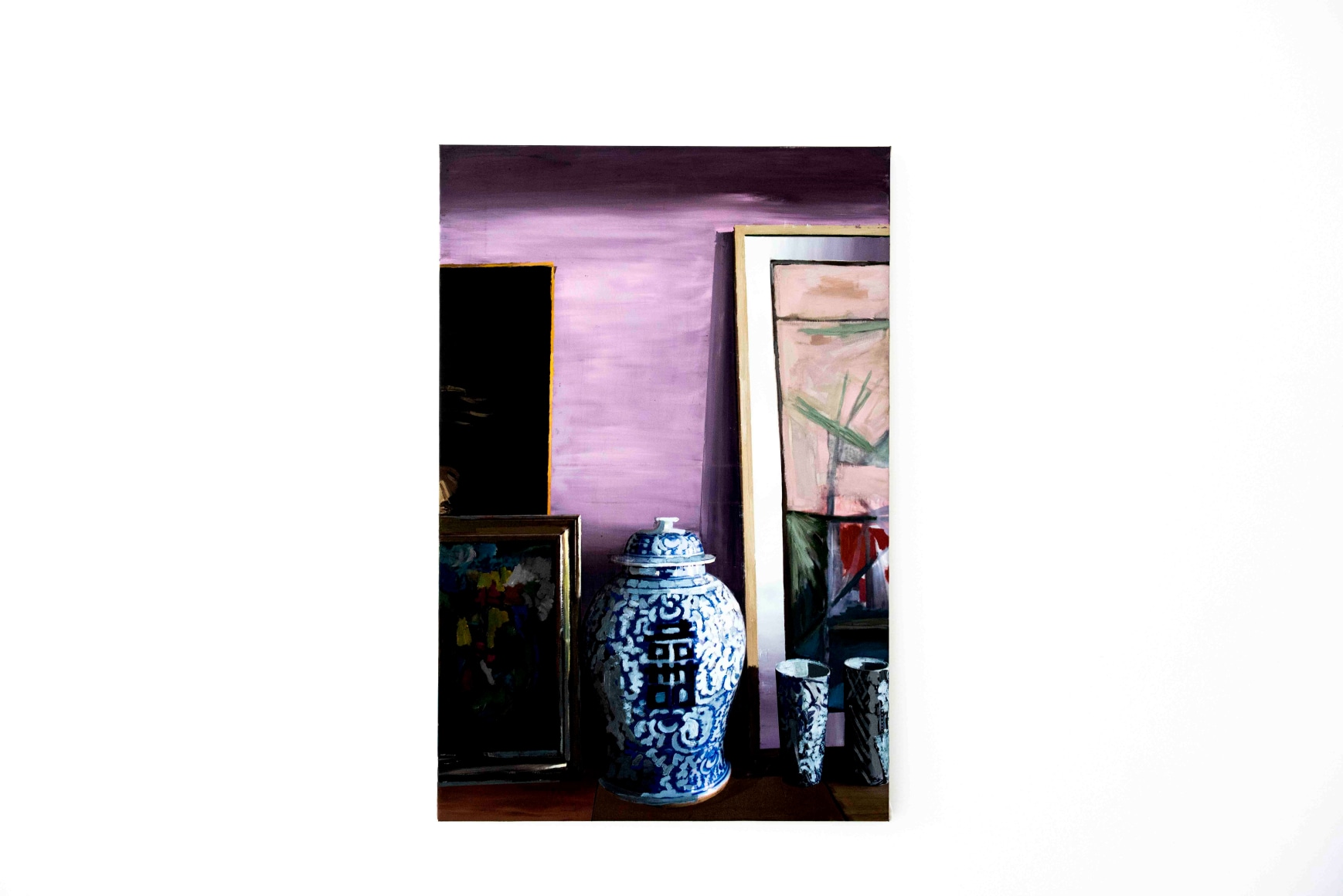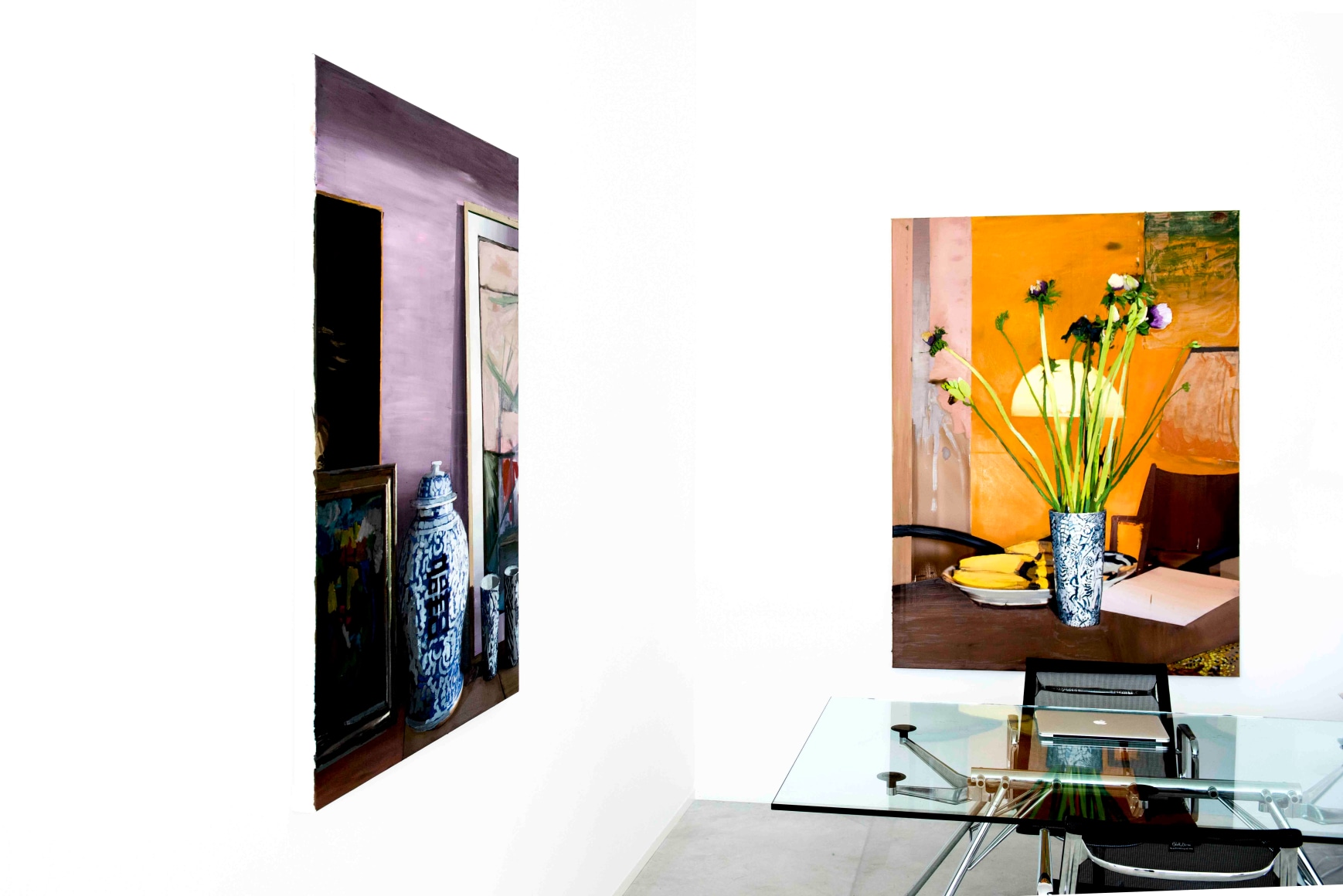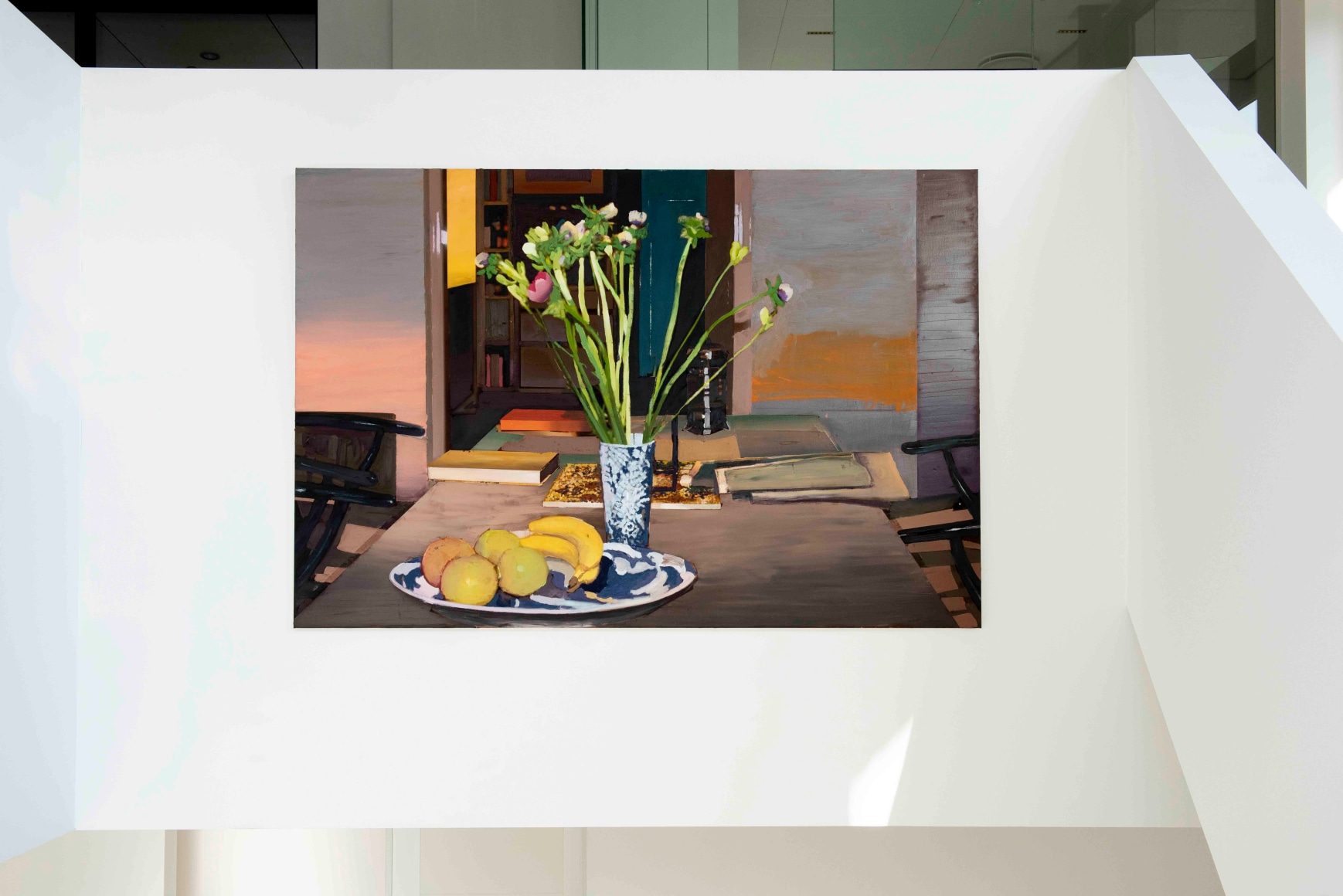Erik A. Frandsen (1957) lives and works in Copenhagen, Denmark, and working in various media, including installation, painting, mirror, concrete, photography and mosaic works. Despite the variety of media, his visual language is continuously figuratively expressed.
Originally interested in ceramics and sculpture, Frandsen studied ceramic in Greece from 1976 to 1979. Later he spent time in Carrera, training as a sculptor before he moved to Paris where he worked with graphics. In the early 1980’s Frandsen moved to Copenhagen, where he co-founded the artist collective "Værkstedet Værst," began to explore other media, and became part of the “det vilde maleri” movement in Denmark.
The exhibition This Is Not My Beautiful House consists of 16 oil paintings and 3 drawings portraying still life motives from the artists home. The works all portray decadent bouquets of flowers gifted from friends or Frandsen´s wife, displayed in vases that are inherited or bought second hand. In many of the paintings one can see other paintings made from other known and unknown artists in the background, all a part of Frandsen´s private art collection. Frandsen manages to create a unity within the different elements depicted in his pantings. He removes the silent noise from the canvas, and leaves the viewer seduced by a dream-like result. He uses flowers as the ultimate symbol throughout “This Is Not My Beautiful House”, a traditional sign for beauty and life, but also of mortality and death. The series of paintings shown in the exhibition can be seen in correlation to the art work the artist made as a site-specific commission for the Danish Royal Family for the Crown Princess Office at Amalienborg Palace in 2010.
A characteristic of Frandsen’s artistic practice is his recycling of motives to various mediums. He is fascinated by the result of the process of appropriation, as it often creates an altogether different expression. By repeating specific themes, the viewer can reflect over different elements of the subject, as the diverse artistic approaches might create a new perspective on details overlooked.

